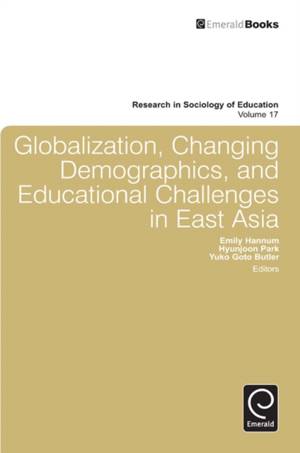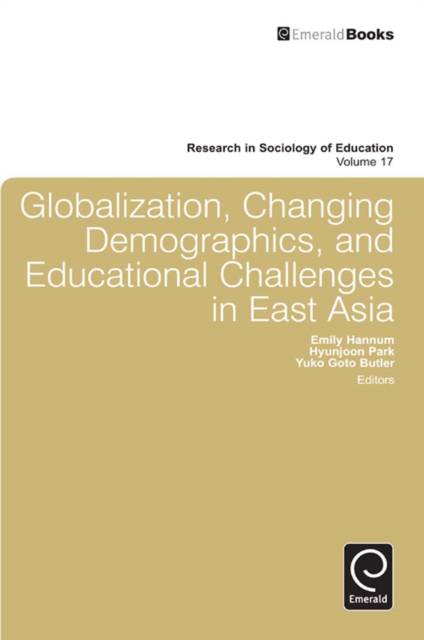
- Afhalen na 1 uur in een winkel met voorraad
- Gratis thuislevering in België vanaf € 30
- Ruim aanbod met 7 miljoen producten
- Afhalen na 1 uur in een winkel met voorraad
- Gratis thuislevering in België vanaf € 30
- Ruim aanbod met 7 miljoen producten
Globalization, Changing Demographics, and Educational Challenges in East Asia
€ 309,45
+ 618 punten
Omschrijving
In recent decades, globalization and regional integration have brought significant economic and demographic changes in East Asia, including rising economic inequality, growing population movements within and across borders, and the emergence or renewed geopolitical significance of cultural and linguistic minority populations. These trends have coincided with significant changes in family formation, dissolution, and structures. How have these changes played out in the diverse educational systems of East Asia? In what innovative ways are East Asian governments addressing the new demographic realities of their student populations? This volume offers a snapshot of key educational stratification issues in East Asian nations, and their evolution in conjunction with changing student populations. Scholars of Japan, China, and Korea in this volume address issues ranging from curricular adaptations to globalization, to persisting and new forms of educational stratification, to new multiculturalism in educational policy. In addition, authors consider the ways that migration is shaping education in the city-states of Hong Kong and Singapore. Collectively, the pieces in this volume represent a first attempt to investigate national responses to critical regional trends.
Specificaties
Betrokkenen
- Uitgeverij:
Inhoud
- Aantal bladzijden:
- 352
- Taal:
- Engels
- Reeks:
- Reeksnummer:
- nr. 17
Eigenschappen
- Productcode (EAN):
- 9781849509763
- Verschijningsdatum:
- 12/05/2010
- Uitvoering:
- Hardcover
- Formaat:
- Genaaid
- Afmetingen:
- 152 mm x 231 mm
- Gewicht:
- 589 g

Alleen bij Standaard Boekhandel
+ 618 punten op je klantenkaart van Standaard Boekhandel
Beoordelingen
We publiceren alleen reviews die voldoen aan de voorwaarden voor reviews. Bekijk onze voorwaarden voor reviews.








